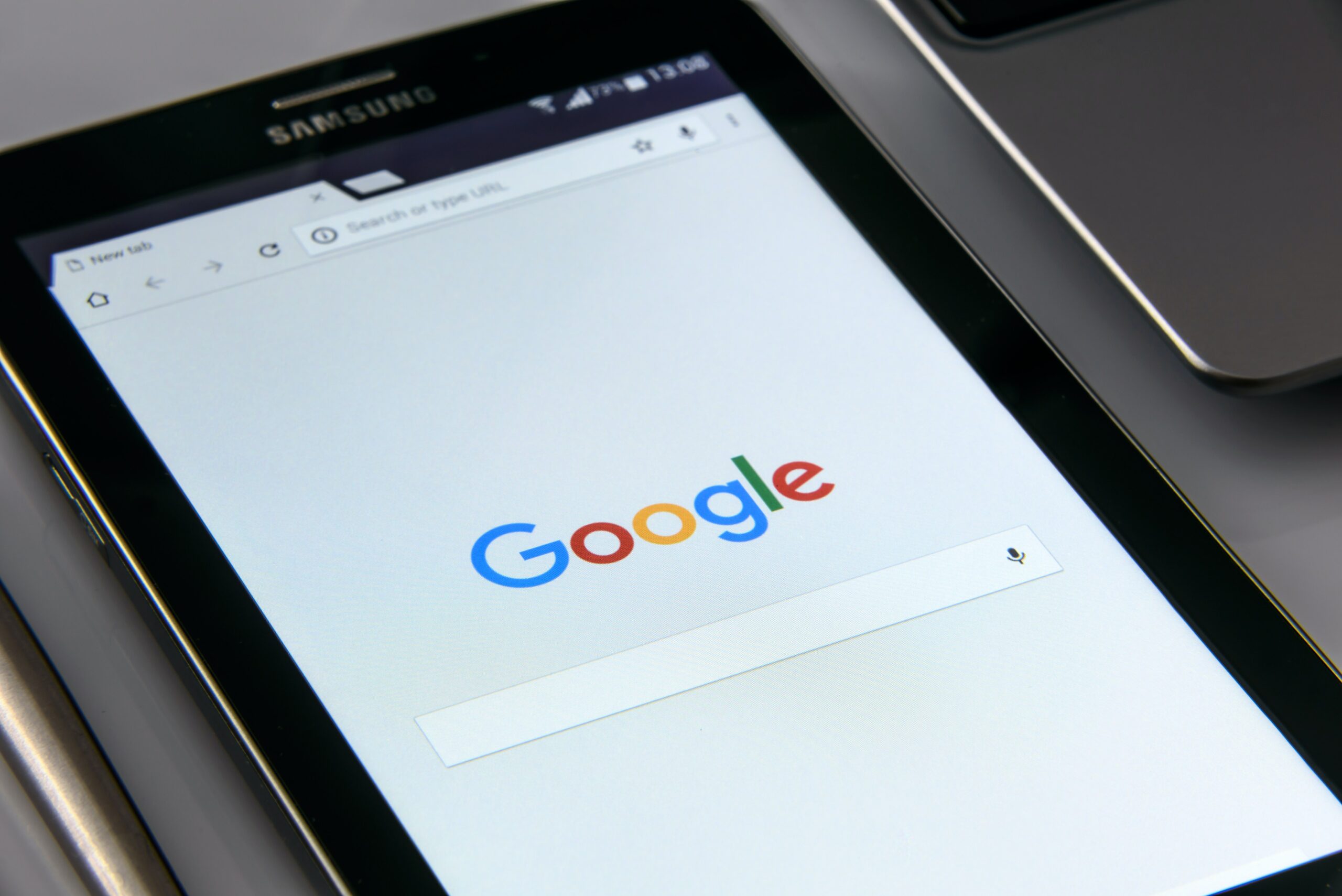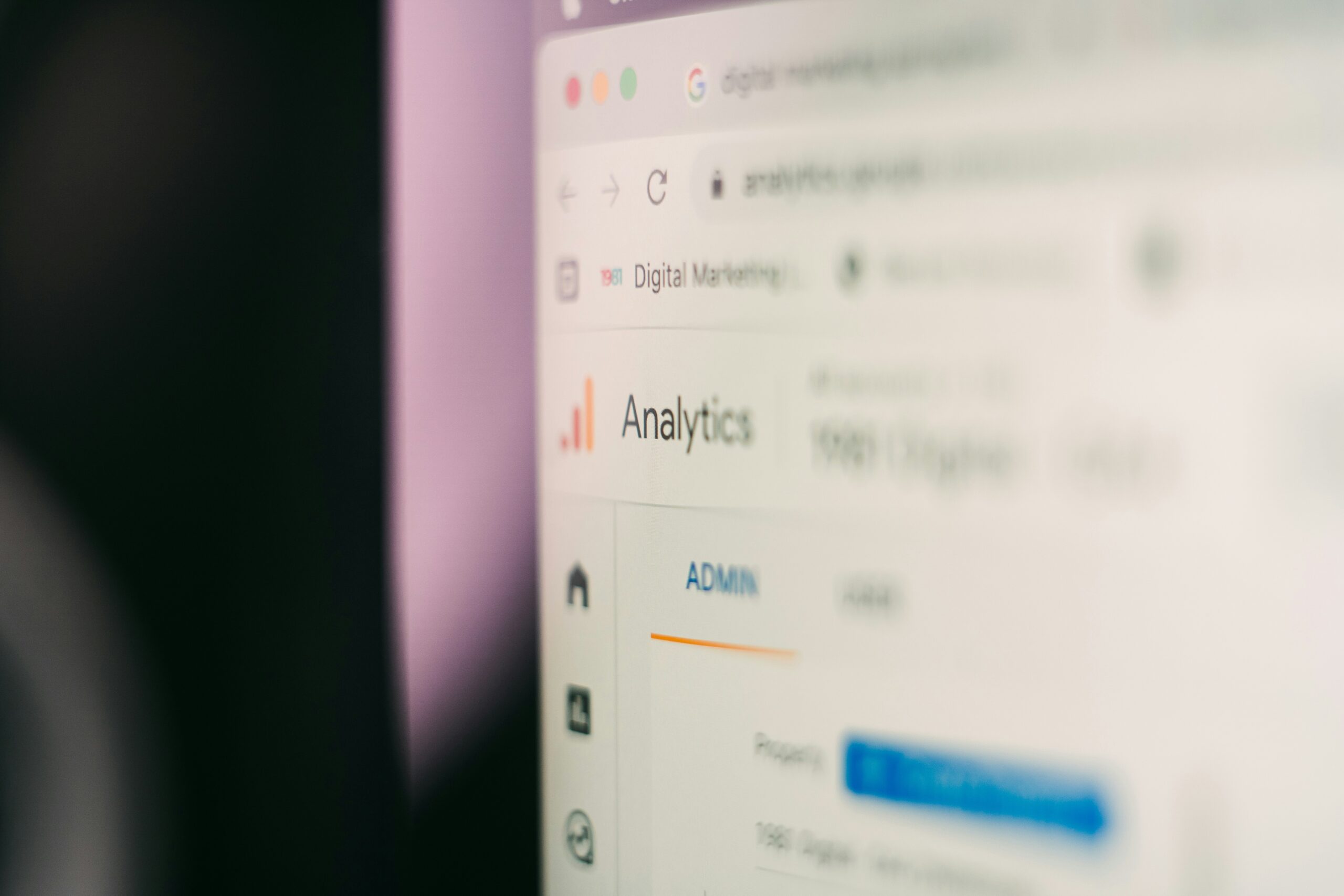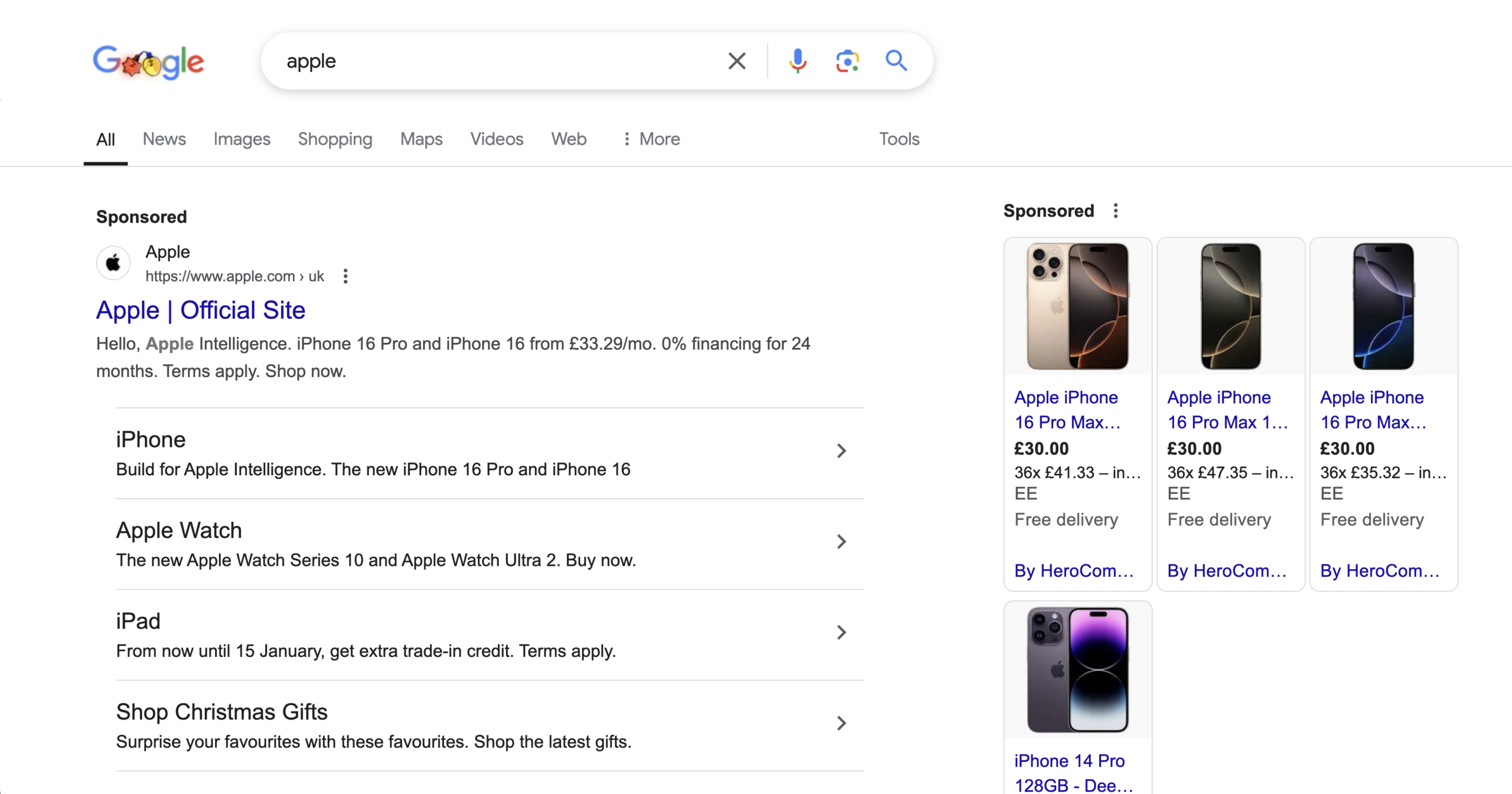Local campaigns
Google has changed the format of local ads campaigns, adding three new methods to promote a business on Google Maps (which just so happens to be the most popular navigation app on smartphones).
The first of these, Auto-Suggest Ads, will display shops and businesses in the autosuggest dropdown menu when users search for something. For example, if I start typing ‘washing machine repair’ I’ll get ads for businesses nearby popping up under my search. This is basically an extension of the autocomplete function which has a big part to play in shaping user behaviour across Google’s products.
Navigational Ads present users with ads for businesses near their route of travel, even if they weren’t looking for a company in that location. I might be plotting my route home, for example, and decide to pop into a coffee shop on a parallel road that I previously wasn’t aware existed.
Similar Places Ads can be a useful way for businesses to make themselves visible to someone navigating their way to a competitor. Maybe the place they were going to is closed, or you catch their eye and they decide to see if the service you’re offering is better than their usual choice.
All three of these changes allow businesses to advertise their services in a ‘high-intent’ context, giving you a better chance of converting your budget into new customers.
Performance Max Campaigns
For experienced advertisers, Google Ads campaigns are a great way to target keywords and websites you want to advertise on, but they certainly require quite a bit of trial and error to master. That’s where Performance Max campaigns come in.
These campaigns will allow you to advertise on every channel Google owns, including any of the placements filled by Search, Display, YouTube, Gmail, and Discovery.
Now, instead of spending lots of time and effort crafting the perfect ads for the perfect target keywords, Performance Max campaigns implement real-time optimisation with very little human input. All the advertisers have to provide is:
- The objective or campaign goal, e.g. Cost Per Action (the total ad costs divided by the number of conversions) or Return On Ad Spend (the revenue you generate in relation to your advertising costs).
- The ad copy, as well as images and videos.
- Bidding – maximum Cost Per Action or target value/conversion.
- Location, language and scheduling.
Advertisers can provide re-marketing lists or custom audiences info as the campaign goes on, ensuring Google is targeting an audience that’s more likely to convert. This will make it easier to reach conversion goals while increasing reach and conversion value beyond traditional keyword-based Google Ads campaigns.
Enhanced Conversions
Wouldn’t it be great if you were able to track how valuable different types of online advertising are to the advertiser when it comes to conversions and sales? This is something Google is always improving at, and Enhanced Conversions is the latest iteration of this process.
By using the consented first-party data provided by your customers (e.g. email addresses, names and phone numbers), Enhanced Conversions supplements your existing conversion tags by sending hashed first-party conversion data (using something called a SHA256 algorithm) from your website to Google in a privacy-safe way.
Utilising only aggregated and anonymised conversions, Google matches the conversion data with signed-in Google accounts and attributes it to your ad events, such as clicks or views, unlocking more powerful bidding.
Conversion Modelling via Consent Mode
Because all businesses in the European Economic Area and the UK have to adhere to the General Data Protection Regulation (GDPR), website visitors can choose not to consent to ads or analytics cookies, presenting an obstacle in Google’s ability to measure conversions for their ads.
To fill in the blanks where Google is no longer able to directly tie users’ ad interactions to conversions, Conversion Modelling uses machine learning to analyse observable data and historical trends, quantifying the relationship between those users who consent to ads and analytics cookies, and those who do not. They then look at the observable user journeys to assess attribution paths for the un-consented journeys, giving advertisers a more complete and accurate view of advertising spend and outcomes, all while respecting the consent of the users. Yay!
Image Extensions
Finally, the last new(ish) ads feature we’ll be looking at are Image Extensions. There’s nothing particularly technical here, just the ability to increase the snaziness of your ads with up to 20 images related to the keywords you’re bidding for.
Each of these images will be approved manually and as long as they meet these format requirements you’ll have a bunch of clickable pictures that cost the same as text-based ads but might do a better job of catching the attention of prospective customers.
Summary
We know that keeping on top of all these new features can be a bit of a nightmare, particularly when Google is constantly tweaking and optimising their products. Luckily for you, we’re here to help.
Whether you have a charity ad grant from Google that you need to manage, or you want to promote your business with some Google ads (formerly AdWords), we can add a huge amount of value to these products, using our SEO know-how to deliver great results without you having to use trial and error to see what works. In a world of constantly changing algorithms, only an experienced SEO agency can keep you up to date.
Talking about keeping up to date…you can find all our PPC advertising news here. This is a comprehensive guide to pay per click marketing, whether you’re already using these campaigns or you’d like to find out if they’re the right choice for you and your business.






